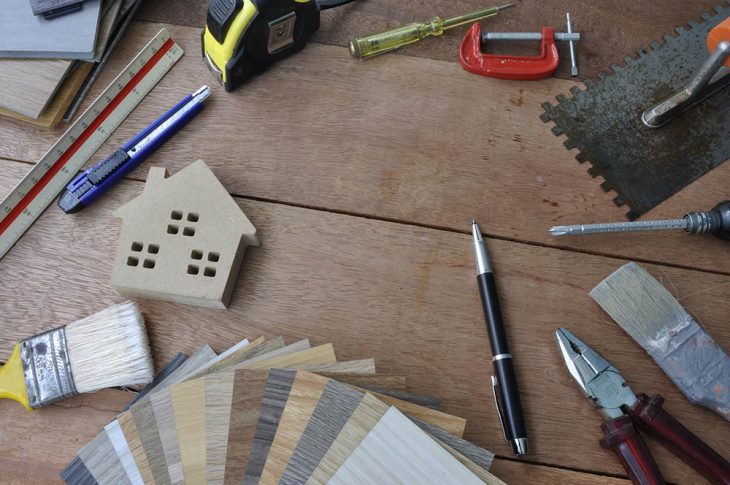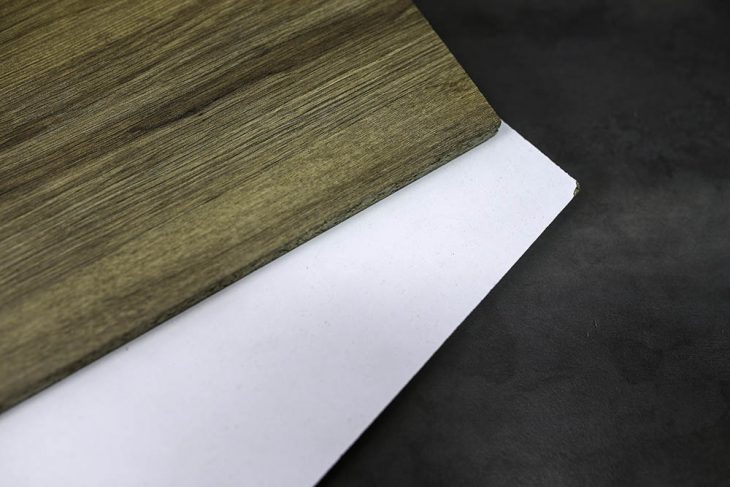
Are you going to lay laminate flooring by yourself? This is a DIY job that is becoming easier to do since there is a wealth of information available online. Not only can it be a fun project, but it can also be cost efficient and avoid the hassle of having a company coming into your home and causing disruption.
But, if you have not laid laminate floors before, you are going to want to learn how to do it properly. After all, you want to achieve the best results and make a professional job of it. Here are some tips on how to lay laminate floors and be proud of your project.

Inspect the Laminate Flooring First
First of all, before you even attempt to install the laminate flooring in your home, you want to inspect what will be lying underneath. This is an important step that a lot of people miss out on. But, it can be very important. You want to look for defects in the floor so that you are not disappointed with the final results. What’s more, a lot of manufacturers will not honour a warranty if there is a defect and you choose to install the flooring. Thus, take 10 minutes before the installation process to check the product.
Check for Moisture
You also need to inspect the area of your home where you are going to lay the flooring. After all, you want to ensure that the conditions are good and are going to achieve the results you are looking for. Thus, one check that you should always carry out before installation is a moisture check. In other words, you need to know what the humidity is and how much moisture there is in the room. You can use a hygrometer in order to do this. The levels should be between 45 and 65 percent for laminate.
Know the Sub Floor Levels
Knowing your subfloor levels before installing new flooring is of utmost importance. This aspect is often overlooked but can make a significant difference in the installation process and the final result. The subfloor acts as a support system for your new flooring and can contribute to its longevity and performance. Before installing any new flooring, it is critical that the subfloor is level.
The standard measure used within the industry for an acceptably level subfloor is no more than 3 mm variation over 1 meter. In other words, if you place a one-meter long spirit level on your subfloor, the height difference between the highest point and the lowest point within that one-meter length should not exceed 3 mm. This might seem stringent, but it’s crucial for ensuring the durability and stability of your new flooring.
To measure this, a long spirit level and a ruler or a measuring tape are your best friends. The spirit level is used to detect any discrepancies in the level, while the ruler or tape will provide the exact measurement of any dips or rises.
If you find discrepancies in the levels, don’t panic. This isn’t an uncommon issue, especially in older homes, and it can be addressed by using plywood or leveling boards. Using these materials, you can adjust and correct the unevenness of the subfloor.
For minor discrepancies, plywood can be an excellent solution. Cut to size, it can be installed over the existing subfloor to raise the level in certain areas. It’s important to ensure that the plywood is securely attached to avoid any movement that could damage the new flooring.
In the case of larger discrepancies, leveling boards, or even a leveling compound, might be necessary. These are thicker than plywood and can accommodate greater differences in levels. These compounds can be poured onto the subfloor, filling in low points and creating a smooth, level surface once dry.
Correcting subfloor levels can take time and expertise, but it’s an important step that shouldn’t be skipped. Remember, your new flooring is an investment, and like any investment, the groundwork is critical. By ensuring your subfloor is level, you can anticipate a smoother installation process and a superior end result. It also contributes to the durability and longevity of the new flooring, preventing problems like squeaking, cracking, or movement in the long run. Thus, it’s well worth the effort to confirm and adjust your subfloor levels.
Acclimatise Laminate Flooring
Installation of a new laminate floor can indeed be a thrilling process. It’s a way to give your room a fresh look and feel. However, patience is key in this process to ensure long-term satisfaction with your new floor. An often overlooked yet crucial step is the acclimatisation of the new flooring material.
Acclimatisation is the process of allowing the laminate flooring to adjust to the room’s environment in which it will be installed. This includes factors like humidity and temperature, which can greatly affect the material. The importance of this process lies in the fact that laminate, like any wood product, is hygroscopic, meaning it can absorb or release moisture depending on the environment. If the flooring isn’t properly acclimated, it could expand or contract after installation, leading to issues like warping, bowing, or gaps between the boards.
Typically, the laminate flooring should be acclimatised for about 48 hours, although this can vary depending on the manufacturer’s instructions. During this period, the laminate flooring, still in its packaging, should be laid out in the room where it will be installed. This allows it to adjust to the room’s typical conditions, such as the average temperature and humidity level. If you usually have the heating on, make sure it’s turned on during this period too, as it can affect the room’s conditions.
Keep in mind that rushing through this step or skipping it altogether might lead to potential damage to your floor and could void the product warranty. As tempting as it may be to get the floor installed quickly, remember that a little patience in the beginning can lead to a much more satisfying and long-lasting result. Acclimatising your product properly is an essential part of ensuring the durability and beauty of your new laminate floor.
To Summarize
Laying laminate floors is definitely a project that you can embark on yourself. It can be a great project that offers a sense of satisfaction, as well as allowing you to save money and disruption. But, you want to ensure that you are going it properly so that it looks professional. For instance, ensure that you inspect the flooring first and check there are no defects. Checking for moisture in a room is important, as well as knowing the sub floor levels. If the room is unlevel, you should fix this first. The product should be acclimated before you install it for the best results.



